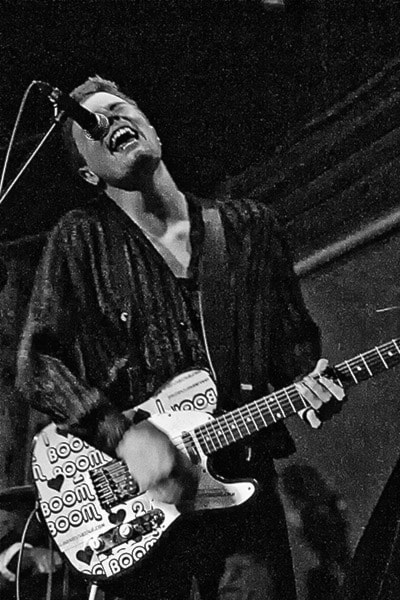A friend dropped by my shop to show me photographs he took of some musicians performing at a local evening event. As we looked at his images, we talked about how successful they were, and how he had to push his ISO higher and higher for lighting conditions he was forced to shoot under.
He began by rating his camera first at ISO 800, then later, higher than that because of the low mood lighting. He didn’t want to use a flash because it would have disturbed the ambiance of the musicians and for the audience.
The only illumination was a couple of little spotlights that had been redirected towards the musicians. In compensating for the low light, his only concern as he prepared to shoot was image noise.
Digital image noise is noticeable by the presence of coloured speckles where there shouldn’t be any.
For example, instead of clear dark or coloured background, there might be different colour speckles in the background. Noise is closest to the “grain” one used to see when using high ISO films; except with film it was more about those areas that didn’t expose correctly.
Photographers have always struggled with the effect of high ISOs, and I remember when 400 ISO was considered a pretty grainy film.
In the days when film was king, there were all sorts of special chemicals to process film to try to get fine grain and allow for pushing film to a higher ISO than 400. Photography magazines had article after article discussing ISO grain.
If photographers asked my advice 10 years ago I would have suggested they use Ilford’s Delta 3200 ISO black and white film and to rate it at 1600 and process it in Ilford Perceptol. But these days some camera sensors are amazing in their ability to “see” light.
Modern camera companies control the way images are processed in their cameras, and there is a lot of marketing based on beautiful images to encourage buyers to spend money on whichever new model they are promoting.
When selecting higher ISO today, the signal from light photons is amplified, and with that the background electrical noise that is present in a camera’s electrical system is also amplified.
Without enough light for a proper exposure, the camera’s sensor will collect a weak signal, and more background electrical noise is also collected.
This isn’t the place for making recommendations for which is the best camera for low light shooting. I’ll leave that to others.
I suggest readers do some research on different manufacturers and tests on the cameras they own. There are also programs like Noise Ninja, Neat Image, Topaz DeNoise, and NIK’s Dfine that can reduce the effect of high ISO. Those that aren’t in the mood to follow the herd of photographers that purchase a new camera every year just to reduce digital noise, might try one of those programs.
For me, it comes down to the purpose of the photographs. If I was photographing a college basketball game and the images would be used in brochures or magazines, I would want the cleanest, lowest noise images I could get; but if they were going to end up as pictures in an on line album, or just stored in a computer’s hard drive for friends’ viewing, I wouldn’t be too concerned about noise.
Therefore, I suggest that photographers determine the purpose in advance of any photos taken in low light.
There is a lot of information on the Internet about specific cameras and their abilities regarding sensor noise.
I suggest doing some research and checking out other photographers’ comments regarding what they own, or may be thinking of upgrading to; and as I said before, do some experimenting with the camera they have.
These are my thoughts for this week. Contact me at www.enmanscamera.comemcam@telus.net. Stop by Enman’s Camera at 423 Tranquille Road in Kamloops. And if you want an experienced photographer please call me at 250-371-3069. I also sell an interesting selection of used photographic equipment.
